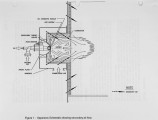| Title |
The Development of a Low NOx High Intensity Burner |
| Creator |
Stretton, A. J. |
| Publisher |
University of Utah |
| Date |
1994 |
| Spatial Coverage |
presented at Kingston, Canada |
| Abstract |
Tighter emission standards and rising fuel costs have created a market for high intensity burners which outperform standard turbulent flame burners. AECOmetric High Intensity Burners feature a swirling vortex which completely mixes the fuel and air to provide stoichiometric combustion efficiency and flame temperatures of about 3000 degrees Fahrenheit. The Conamara Group is engaged in a research program in conjunction with the National Research Council and Consumers Gas to reduce the NOx emissions from 100 ppmv to under 20 ppmv. Experimental results will be presented to illustrate the impact of secondary air schemes on the CO and NOx performance of the burner. |
| Type |
Text |
| Format |
application/pdf |
| Language |
eng |
| Rights |
This material may be protected by copyright. Permission required for use in any form. For further information please contact the American Flame Research Committee. |
| Conversion Specifications |
Original scanned with Canon EOS-1Ds Mark II, 16.7 megapixel digital camera and saved as 400 ppi uncompressed TIFF, 16 bit depth. |
| Scanning Technician |
Cliodhna Davis |
| ARK |
ark:/87278/s6959m4p |
| Setname |
uu_afrc |
| ID |
8053 |
| Reference URL |
https://collections.lib.utah.edu/ark:/87278/s6959m4p |










